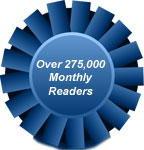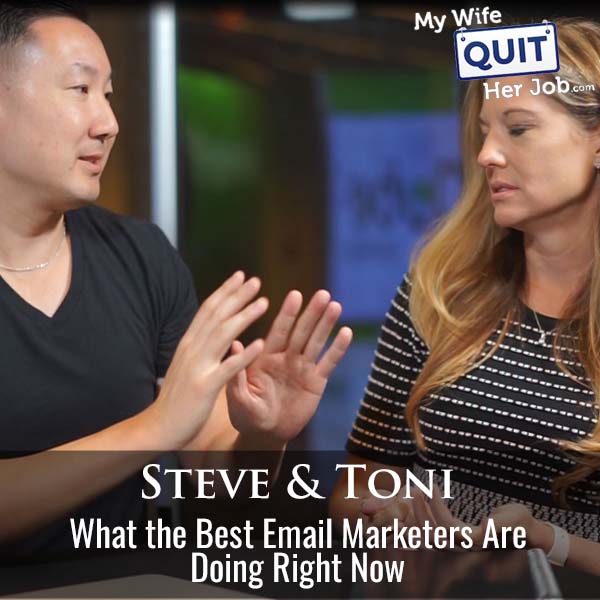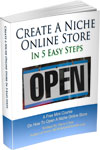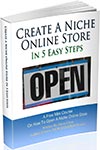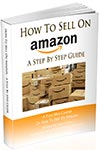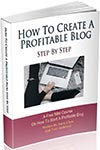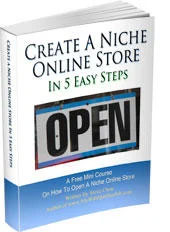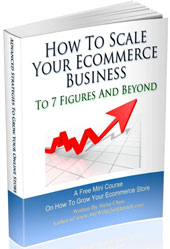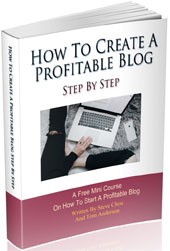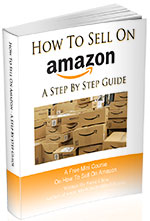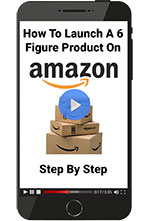Podcast: Download (Duration: 43:39 — 50.2MB)
In this episode, Toni and I dive into the key takeaways from the Email Newsletter Summit she recently attended.
From list-building strategies that actually work in 2025 to content frameworks that boost open rates, we’ll break down the most actionable insights, trends, and expert tips shared at the event.
Get My Free Mini Course On How To Start A Successful Ecommerce Store
If you are interested in starting an ecommerce business, I put together a comprehensive package of resources that will help you launch your own online store from complete scratch. Be sure to grab it before you leave!
What You’ll Learn
- The latest email marketing trends that top marketers are using to grow their audience
- Creative approaches that are keeping subscribers clicking and opening emails
- Real-life applications with email that are working right now
Sponsors
SellersSummit.com – The Sellers Summit is the ecommerce conference that I’ve run for the past 8 years. It’s small and intimate and you’ll learn a ton! Click Here To Grab The Recordings.
The Family First Entrepreneur – Purchase my Wall Street Journal Bestselling book and receive $690 in free bonuses! Click here to redeem the bonuses
Transcript
Welcome back to the podcast, the show where I cover all of the latest strategies and current events related to e-commerce and online business. In this episode, Tony and I dive into the key takeaways from the email newsletter summit she recently attended. From list building strategies that actually work in 2025 to content frameworks that boost open rates, we’ll break down the most actionable insights, trends, and expert tips shared at the event. But before we begin, I wanted to let you know that tickets are now on sale for Seller Summit 2025.
00:29
over at SellersSummit.com and the prices are now going to go up every two weeks until the event starts. The Seller Summit is the conference that I hold every year that specifically targets e-commerce entrepreneurs selling physical products online. Unlike other events that focus on inspirational stories and high-level advice, mine is a curriculum-based conference where you will leave with practical and actionable strategies specifically for an e-commerce business. Every speaker I invite is deep in the trenches of their e-commerce business
00:57
entrepreneurs who are importing large quantities of physical goods, and not some high-level guys who are overseeing their companies at 50,000 feet. I personally hate large events, so the seller’s summit is always small and intimate. Every year we cut off ticket sales at around 200 people, so tickets sell out fast, and we’ve sold out every single year for the past eight years. If you are an e-commerce entrepreneur making more than $250,000 or $1 million per year,
01:25
We also offer an exclusive mastermind experience with other top sellers. The Seller Summit is going to be held in Fort Lauderdale, Florida from May 6th to May 8th. Right now, this is the cheapest the tickets will ever be. So head on over to sellersummit.com and grab your ticket. Now onto the show.
01:48
Welcome back to the My Wife, Quit or Job podcast. A couple of weeks ago, Tony went to an email marketing conference. And since email is such a big deal for both of our businesses, I thought that we would recap the event today. Yeah. So this is kind of ironic. I’m giving a talk in the next couple of weeks about avoiding shiny object syndrome in your business.
02:12
And then I proceed to go to an email marketing summit where I have 52 business ideas and want to implement every single one of them. But that’s what you do for a living now. So I don’t feel like that was a shiny object. That’s true. But I think every time you go to any event and we see this with Seller Summit, right, where people go to Seller Summit, they hear, you know, they hear Tiffany talk about live selling or they hear Andrea talking about Facebook and or Brett Curry talking about Google. Right. And they’re like, this is what I’m doing. I’m doing all of it right now.
02:40
And so I think the biggest thing to take out of anything we talk about today or in general is that, you know, maintain the Steve Choo strategy, like pick one thing for the year and focus on it. So if you see if you hear something today that sounds great, make it your one thing for the year. But don’t don’t do all of it. You know, what’s funny about you saying that is I literally just published a video yesterday about how selling on Tmoo might be attractive now.
03:09
because they’re not charging any freeze and they’re doing free advertising. Really? to poach Amazon sellers. Because you know, the new rules pretty much decimated their China business. Yeah. So they’re trying to recruit US sellers. And then the comments, everyone’s like, oh yeah, I got to try this. Well, hold on. Hold on. I’m just saying it might be a good opportunity. I’m not telling you to go out and rush to do it. anyway. So it was in Austin, Texas. I actually don’t know the people who ran the conference.
03:39
I actually don’t think you knew them either. I want to give them credit. It was like, now I can’t find the guy. Matt something. He didn’t speak. anyway, so just like overall, cause I said, sounds like they’re going to do this event again. So if you’re into email marketing, this was really focused on content based email marketing. So if you’re an e-commerce, this probably would be not the best conference for you.
04:09
because there wasn’t a lot about e-commerce email marketing in there. This was a lot of content-based email. However, they did a couple things really well at the conference. One, they had a lot of really smart speakers, and they actually only gave the speakers like 25 minutes on stage, which at first I was like, oh, you know, but I might steal the idea from them because the nice thing about a 25 minute talk is that people can only cover like two or three points.
04:38
And so you don’t leave overwhelmed with like from one session, right? It’s like, oh, I can’t absorb or digest all this information. Like everything comes to you in like really digestible ways. So I’m kind of learning to like that 25 minute talk time. I don’t like it. And I’ll tell you why. OK, tell me why. From a conference holder perspective. OK. So you have to bring in a whole bunch more speakers. Yes. Right. And I don’t think the economics really work out also.
05:08
Plus, having one or two things, I get it. I get it, because that’s how gorgeous this conference works. Every year I speak at DTCX, whatever it’s called, and I get 20 minutes. What ends up happening sometimes for me is it’s hard to get through something even remotely complex in 20 minutes. Which I think is kind of the point though, because to me at a conference, you can’t get super complex. You’ve got to stay like…
05:36
If you’re going to get complex, it should be one complex thing. I would say as a conference holder, agreed that the math doesn’t work to bring in double the amount of speakers, but what does work is giving people more networking time or more roundtable time or things like that. I think you can balance it, but I did like that format because I think one of the problems, because we don’t have trained speakers at our event. These people are people who are working in the business on a daily basis.
06:05
And so I think when you say to someone you’ve got 50 minutes or you have an hour, they’re like, oh, you know, and they and we’ve had speakers show up with 135 slides. Yes. And and not like the slides because there was one speaker here that had a lot of slides, but it’s like each slide was like one second. Right. It was just to keep your like Pat Flynn does this is to keep your attention. Right. Right. So anyway, all that to say, I did like that format. The speakers were awesome.
06:33
The logistics were a little iffy, but it was their first year. Obviously, we’ve all had a first year. Well, not everybody, but you and I have had a first conference year. I’ve had a couple. There’s always some hiccups. I want to start with, honestly, what I got the most excited about and the talk that got me the most excited and also sent me on to the rabbit trail, and that is local newsletters.
06:58
Yeah, you mentioned that talk to me about that. OK, so you would create an Orlando newsletter. Yes. So the guy who spoke his name is Ryan. He owns 6 a.m. City. And it’s basically a I don’t want to say it’s a franchise because it’s more like they just basically find cities and go in and start local newsletters. Right. Like so they he has local newsletters all over the country. Now, I would say just because I’m telling you this, don’t think that you can’t start one to even if
07:27
6 a.m. cities already in your town. Most towns can definitely support, mean, most towns support multiple hospital systems, multiple, you know, dentist office, multiple, you know, little league, whatever. So don’t think that just because this guy owns like a bunch of them that it’s like, well, he’s already done that. There’s no room. I think there’s absolutely room. And this is actually he’s got a genius business model. So he goes into a city with two editors and a sales guy.
07:56
And basically their model is to make the local newsletter profitable by six months. And the way that these make money is primarily selling ads in the newsletter. Now I went and did a little digging on him and they do have websites to go along with the newsletter. So if you like read an article, if you see an article in the newsletter, you’re going to click over and read the full thing on the website. So all the information is not delivered inside the newsletter. However,
08:26
I think you could do that too. I don’t think you need a full robust website to do this. sorry, go. Just walk me through it. mean, how do you sell advertising unless you have the audience to begin with? So he talked a little bit about growing the audience. A lot of it is in, you know, kind of getting yourself out there. It basically is not a hard sell. Right. I don’t know where if this happens where you live, but where I live, I get a magazine. In fact, I just got it this week.
08:55
for my town. And it’s like little feel-good stories and the ice cream shops opening and this, know, like we had the town I lived in, well, it’s basically the same town. Our little league team won the World Series this year, right, or last year. So like, you know, there was an article about that and the little parade and all these things. So it’s all these like feel-good local stories and, you know, where people are rescuing birds and, you know, and then in that magazine there’s ads, right?
09:22
So I think when people go, hey, here’s a newsletter that you can read and learn about the happenings in your city, learn when the new Publix is gonna open, get information on things in your community, it’s not a hard sell. And you basically can work with other local businesses to get subscribers. for example, you could, like we just had a donut shop open right down the street from us. They’re really good. I was a little hesitant.
09:50
You know to try a new donut shop, but I’ll take one for the team and test donuts But like they just opened and so if I had a newsletter for my town I would say to them Hey Maybe we could work out a deal where someone gets like a free coffee a very inexpensive thing right in exchange for providing their email address You know to you guys and we’ll get it too, right? And you obviously disclose that to the person signing up and then we’ll give you advertising in our newsletter, right? So both
10:16
Both are growing, right? They’re getting an email subscriber and then they’re getting people that don’t know that they exist in your newsletter. I think this guy said he started his very first one with just family and friends, like 70 people, put it on his Facebook page kind of thing. Because the content was so good that it just organically grew because it’s not-
10:41
It’s not like, I want to subscribe to Chipotle’s emails, right? Or it’s like, I don’t want to get a Taco email every day. But do I want to get an email about what I can do this weekend, what time the farmer’s market’s open? Absolutely. He had a couple suggestions or rules that they use, obviously, for going into cities since they have a whole production basically with this. They like the smaller metro areas. He wouldn’t go into San Francisco.
11:09
I think that he actually said they did and it didn’t do well. They like to go in places where, so let’s say I live in Orlando. For me, we’ve got Orlando, we’ve got Jacksonville, we’ve got Tampa. They’re like three big metro areas. If you have an Orlando newsletter, the healthcare systems are the same. The healthcare system in Jacksonville and in Tampa, have all the same, it’s the same company.
11:37
If I want to sell advertising to that healthcare system, they could get it in three areas if I had the three newsletters. It’s an easier sell and an easier grab for advertising. Obviously, you can sell to the mom and pops, but he made the point that we talk about a lot. It’s easier to have 10 customers at 10 grand a month than it is to have 100 customers at $1,000 a month with advertising. When you find these little metro areas where you can sell to companies that are like,
12:07
just located in that area, but they’re like, a healthcare system isn’t going to blink at a 10K ad spend. A mom and pop place is. The other issue is a healthcare system is never going to care if they get a click. Whereas the mom and pop, if they’re like, this is our $500 advertising budget for the year, if you’re not driving clicks or they’re not seeing traffic, they’re going to probably pull their dollars.
12:33
He talked a lot about using like the grocery store, the bigger spenders and ads to work on the advertising. Obviously, you can do the mom and pops too. Is this a legwork related thing? Like you literally walk from store to store and you have these negotiations. So that’s why they hire us. They have a sales guy that does that. I think if you’re active in your town, this would be pretty easy to do. Like if you already have relations, like I know my friend Sandy, who you’ve met.
13:00
Like she knows the manager at the grocery store. She shops at every. She lives by a shopping plaza. She knows every owner in that plaza personally. Right. So like you start with the relationships you already have and then you build it out. The nice thing is it’s easy to get subscribers for this because people want this information. Yeah. With the death of like newspapers. Right. Like I remember when I was a kid, we got a daily newspaper. And on Friday or Thursday, there was like this event section in the newsletter that told you everything or the newspaper.
13:30
Well, I don’t even know if that exists because I haven’t gotten a newspaper in like 20 years. But like, even if it does exist, most people aren’t getting a newspaper anymore. So you’re providing a really valuable service to the community. The other thing that I thought was interesting that he said, and I think is important if you’re thinking about doing this, is you don’t have to go to all the events. The events will actually give you all the information you need to write it up.
13:56
and you can get people who go to the events to take the photos and email them to you. Right? Because think about your mom or my mom or, know, like, my picture was featured in my news. I remember when it was a big deal to have your picture in the newspaper. People are still excited to submit content. He said that’s one of the biggest mistakes they made early on was thinking that they had to be at everything and he’s like, you don’t have to be at anything. No, obviously, if you want to go or do stuff like that.
14:26
I think the other cool like side benefit of this and this is just like through someone who’s been in like content creation forever. It’s kind of cool to be like, hey, we get to go to all the restaurant openings for free and we get, know, like once you become a, you know, a force, you get a lot of opportunities like that. Now that might not be for everybody, but to me, that’s always a fun side benefit. I remember when I was little, there was this local newspaper called the Potomac Almanac. It was just for our neighborhood. Yes.
14:56
I used to read that thing religiously. This is the same thing. Yeah. Yeah. So basically you’re just taking what used to be, you know, something that was print and you’re making it digital. And I think the real key in this one is that, you know, print media is just in such a decline that it’s like, why would you not jump on this? And it’s not even like you can’t monetize it in other ways, too, right? Like you can.
15:23
have affiliate links, can have other things in there. You can work on commission with local vendors, things like that. Like maybe there’s a pet spa, right? And so it’s like, hey, we’ll do a coupon and for everybody who brings in that coupon, we get 10%. You can work deals and things like that. So I actually think that’s a pretty cool business model. And I don’t think a lot of people are doing it.
15:48
When I started looking around, I didn’t see this overwhelming amount of local newsletters. I mean, this is definitely a word of mouth thing, right? Because now that Google isn’t really ranking smaller sites, it’s pretty much you get someone and then they talk to someone, they talk to 10 people. Yes. Yeah. OK. I can see how this would work. Yeah. So that probably got me the most excited about stuff as far as like
16:16
I was like, maybe I should start an online newsletter. What about list building strategies? From the conference? Yeah. Interestingly enough, they didn’t talk a lot about that. OK. know. Or maybe I wasn’t paying a lot of attention. But I think, yeah, they just I mean, a lot of it, the same stuff that we always talk about in our courses and stuff like that is, you know,
16:45
But the number one thing that every single speaker said that I remember was that your content is your best list building strategy. If you have great content that you’re putting out, your list will grow organically. Now, you’ve got to start somewhere, right? But our friend Chanel who spoke at this event, actually this is what she hammered home the entire, her entire talk.
17:12
If you think about her newsletter, she started two years ago. She’s at, don’t know how many, 40 plus thousand subscribers in two years. That’s very fast growth considering she didn’t really have a website. She had a landing page. She didn’t start a podcast until two months ago, three months ago. It’s like her only mechanism for growing the newsletter was people sharing the newsletter. Because the content of her newsletter, and her newsletter is called Growth in Reverse, shout out to Chanel.
17:42
And it basically does deep dives into content creators who’ve grown their businesses. But the content in her newsletter was so good that people couldn’t not share it. And I think that’s honestly the key with any newsletter is that you just have to have content so great that people want to talk about it. I mean, it was funny because you and I both know Chanel. I’ve known her for a long time. She’s a huge introvert, right? She was like,
18:11
you would have thought Justin Bieber walked into this conference. She’s famous in the newsletter world. Everyone wants a picture with her to talk to her. Of course, I’m laughing because it’s her nightmare. She likes to meet people, but she does not want to be the center of attention by any stretch. Just from creating that great content with her newsletter, she’s built it in an organic way. Now, I will say that ConvertKit, and I think
18:40
I’m not sure if Beehive offers this too. I did talk with the Beehive folks, which is another email newsletter platform. They have some tools now that make people sharing and getting subscribers pretty easy in your newsletter. Some pretty cool features. I think that’s just another incentive to continue to make great content because you want people to what you’re talking about.
19:09
I just wanted to take a moment to tell you about a free resource that I offer on my website that you may not be aware of. If you are interested in starting your own online store, I put together a comprehensive six day mini course on how to get started in ecommerce that you should all check out. It contains both video and text based tutorials that go over the entire process of finding products to sell all the way to getting your first sales online. Now this course is free and can be attained at mywifequitterjob.com slash free.
19:38
just sign up right there on the front page via email and I’ll send you the course right away. Once again, that’s mywifequitterjob.com slash free. Now back to the show.
19:49
Now, to be fair, think Chanel used some tactics to build her list too, right? She did. Partnering with other people with lists. Some JV programs. I can’t remember exactly. She did a post on it, I remember. Yeah. She actually put her time to 50K subs. Oh, sorry, this is her average time. on.
20:19
People, let’s see, to 50,000 subscribers of the people that she interviewed, 7 % had 50,000 subscribers within six months, 14 % had it within a year, 17 % had it within two years, but the main amount was two to three years as 50,000 subscribers, 33 % of people. I think that’s important to note. Yes.
20:50
I think one of the things that you can do to grow your newsletter is basically what Chanel did too was she profiled other content creators. If you can partner with anyone, it doesn’t have to be profiling of a content creator. If you can partner with anybody to email their list, you email your list. The only caveat to that is if you have 5,000 subscribers and they have 100,000 subscribers,
21:18
that’s probably not the partnership that’s gonna work. But if you find another creator with under 10K subscribers, they’re probably very happy to do like a joint blast or anything like that. Kind of the same way that you can do with YouTube, right? Where you can work with other content creators to. Right, and do co-labs and whatnot. Yeah, for sure. Just similar principle. Yeah, what was her talk on by the way? Basically like all the people she’s interviewed in the
21:48
Like, what did they all do the same? And her thing is basically everything that everyone did the same was quality content. See, mean, honestly, I hate that answer. I know. Right. Because what is quality content? It’s basically just, you know, you. Right. Yeah. Yeah. And how you do things. And but I think and she called it insanely valuable content. Sure. So.
22:16
And most newsletters are free. So for someone to be able to get something that’s that valuable for absolutely free, it’s a win, right? And she included some quotes that people have said about her newsletter is, can’t believe this is free. How do you only have X amount of followers when she was first getting started? I feel like I’m stealing from you. How do you put out content like this every week?
22:46
people, that was the feedback she was getting when she was putting out her newsletter. And she was said basically, said, if you’re not getting replies like that to your email newsletters, you have a content problem. And so that’s basically her whole schtick, right? Is that if you’re putting out this great content,
23:08
is once you get the ball rolling, like those first six months, this first year, then you start to see by two and a half, three years, you’re getting that 50K subscriber base. I think that’s where most people miss the mark, to be honest. I’m not going to call you out, but I am. If you think about how you use your email newsletter, it’s not about great content. It’s just about pushing out to people what you talk about on YouTube or on the blog or
23:37
You know, whatever. Yeah. I mean, the content in the YouTube video is good, but I’m not writing creative content in the newsletter itself. Right. There’s no reason for someone to sign up for your newsletter because they can just go look on YouTube at what they can just subscribe to on YouTube. And obviously you have a different business model, you know. Yeah. But I think the newsletter, the other big takeaway I got from this was like the newsletter based business model is alive and well. And I think
24:07
very underutilized. This is the nugget I think that I got out of it. One of the big things is that people still read newsletters. They don’t read email. They’re not looking at every promotional thing that ends up in their inbox, that kind of thing. Our friend Dana Johnzema started a newsletter, I don’t know, it was like a year ago or something. She doesn’t email very regularly, but when she emails,
24:36
Like when I see that in my inbox, I am excited. It’s the first thing I open in the morning. It’s the first thing I read. And I always share it with like three people. Right. Like the base on the content. And so I think if you want to put great content in an email newsletter, there’s still and Dana’s not monetizing or doing anything like that. But there’s still a ton of monetization opportunities for you. And I will I will say it’s probably on par with like
25:06
YouTube, right? As far as like your ability to grow it. Okay, I there that’s where that’s where you disagree. I you’re gonna disagree. That’s okay. can because I mean, then it’s just word of mouth versus like some gigantic engine that can instantly broadcast you to millions of people. Right? Yes. Like, my top YouTube video has some almost like 3 million views. How would I get that in a newsletter?
25:32
Well, you’re probably not going to get 3 million views on a newsletter, although there are people that have that many newsletter subscribers. I think as far as there being the opportunity, you and I both think that YouTube is like, you can still start a YouTube channel today, grow it and be rich. You know what I mean? I think you can still start a newsletter today, grow it and be rich. No, I agree with that.
26:00
That’s where I feel like the opportunity is the same versus if you want to start a website and just start blogging and just log in to the blog content, the opportunity is less.
26:13
Like if I wanted to do a newsletter really well, I would be forced to just take the content I’m putting in the video and write it in the newsletter in a creative way and tell the story. Yeah. so speaking of the great content. So Chanel did have some takeaways of like, is what is great content? Like what gets people to share your newsletter, subscribe, promote it to their friends, all that stuff. And it’s funny because this is like what we talk about all the time. So make money.
26:42
If you’re teaching people how to make money, people love that. If you’re teaching people how to save money, people like that. Even the old school people like Clark Howard and Dave Ramsey, people still like the money saving. One of the great newsletters I get every day is the points guy. He’s teaching you how to save money on travel, save time, which is where my newsletter would come in. I’m always trying to help people get more time back with money and time saving hacks.
27:10
to make them laugh, which is a big one. And not everybody has the ability to do that. Obviously, that’s a pretty tough one. And then to teach them something. So when they read it, they feel smarter. And I think that’s actually a big one, right? Because if people can read something and there was a guy, and I’m trying to think of what the newsletter was, that basically gives people like everything you need to know for the day, like the day or the week, like
27:39
It’s all from a like agnostic perspective. Like what are the sports highlights? What are the political highlights without like a spin on it? Right. What are you know, what is what is the you know, whatever what’s trending on TikTok, whatever you so you read this newsletter. Right. And I’ll have to figure out the name of it. I can’t think of it right now. It’s a popular one. They millions of subscribers. But basically, they’ve built their whole business on if you read us every morning.
28:05
It’s kind of like the old, once again, the old school, if you read the newspaper every morning. I totally get it. Yeah. So, you know, I’m just looking at my inbox and there’s actually very few newsletters that I actually read. The ones that I do, I read because they don’t have any other way of hearing from them. Yes. Yes. Which I think is key. So, for example, like this, I read Drew’s newsletter whenever, whenever it comes out.
28:34
Because he’s kind of a witty writer. He’s pretty good. But he doesn’t really have a website. He doesn’t have a channel. He doesn’t really have a podcast. if he did, I might not read it. Yeah. Yeah. No, I agree. OK, so the one newsletter that I was talking about was Morning Brew. Have you heard of that? Oh, yeah, of course. Of course. These guys are worth they sold, right? a huge sum. Yeah.
29:02
Basically, that’s one of those that makes you smarter. You get the morning brew and they spend a lot of time curating the content. This is a full-time job for people. This isn’t like, you’re going to do this on your side hustle kind of thing. I think it’s important to note that they do a really great job of breaking down information and giving it to people in a digestible manner. Once again, they use some tactics where like,
29:30
They incentivize people to subscribe and things like that early on, but now they don’t have to do anything really to incentivize people. It’s just people want to be on the list. I think what Chanel does can be done with very few people. mean, Chanel, basically it’s her and she has an assistant basically. Exactly. Yeah. As a side hustle. So she puts out really good researched content. Yeah.
29:55
And I think she only sends out email like once a week, right? Once a week. Yeah, once a week, which is pretty I think the morning brew does every day. like, realistically, you could do this once a week. I want to say that when I talked to Chanel at FinCon, she was telling me that it took her about 20 to 25 hours a week to curate all the content. Now, she’s writing thousands and thousands of word pieces of content. But yeah, I I think I think 20 hours a week is still a side hustle if you need it to be.
30:20
I mean, her content is very thorough. I would not be surprised that he spent she spends that much content time. Yeah. And it’s a post. It’s a blog post. Right. Yes. Yeah. Essentially. And then her newsletter is pretty witty, too, to guide people to that. Yes. Yeah. A post. Yeah. But I so I feel like this is something where if you’re not doing this right now, like you should probably if you’re if you’re creating content, right, you should figure out what the angle is for your business.
30:49
We always use Kevin in the podcast as an example. Kevin’s one of our students. He’s a tech security guy. He’s an IT, Yes. Internet security. I was trying to think of the buzzword for that. I think Kevin could put out an email once a week that’s the highlights of internet security, like hacks that happened, little tips. He could send out a morning brew, but in
31:19
IT world. I’m sure this newsletter exists. In fact, I think I saw an example of it at the summit. I would totally subscribe. Actually, this one does exist to an NBA digest. If you email me in the morning, give me all the games highlights, link to some ESPN clips, and I could get it all right there instead of having to click all around on my phone and go to different tabs and all that stuff, I would totally subscribe to that. I would share it with everybody in my life that likes basketball.
31:49
Actually, I belong to a newsletter like that in the tech world for all the latest, you know, consumer electronic stuff. Yeah. Yeah, I do open that one higher than average because I’m just curious. It’s my way of knowing what’s going on. He could totally pull that off. Absolutely. So, yeah. So I think that there’s still like such an opportunity here that people aren’t taking. I want to get to this one real quick before we have to wrap it up. There were a lot of good sessions. I will say every session I took at least one nugget.
32:18
There was one session by Steph Smith that basically talked about all the different ways to curate content now with AI. And not using AI to write the newsletter, but like how there are publications from the government and all these websites where you can go to and have AI, use AI to basically curate that content for you to use in your newsletter. So there were a lot of good like tricks. But I will say like probably my favorite talk was from Jay Klaus.
32:45
who I did not know before this event. He basically took everything that we see people floundering with and was like, here’s how you put it together. He talks about so many different platforms. There’s X, there’s threads, there’s what’s the new one? Bluebird, Blue Sky, something like that. There’s TikTok, there’s Instagram, there’s Facebook, there’s LinkedIn. No matter
33:14
If you’re listening to Chase Diamond, he’s like, get on LinkedIn, it’s the best way to grow your business. And if you talk to someone else, they’re like, get on TikTok. And you talk to the next person and they’re like, X is still where it’s at if you’re in this market or whatever. And he made a good point, which I think people really need to remember when they’re thinking about this, is that a lot of those platforms, especially TikTok, Instagram, Twitter, know, threads, whatever, that’s just the distribution.
33:42
Right? Like that just is where you’re going to put little teaser contents, but that should never be your platform. And we, I’m going to see this at the pet summit in a couple of weeks, right? People who’ve built their entire platform on TikTok or Instagram. And I get it. Like you’ve had videos hit on TikTok, right? And you’re just like, give me more, you know, cause it’s like that a hundred thousand views, things like that. But at the end of the day,
34:11
there’s really no way to monetize those people outside of the monetization inside the platform, which is generally pretty cruddy. Right. And so his whole point was figure out one of those platforms that you want to use. Right. Maybe it’s TikTok, maybe it’s Instagram, maybe it’s Twitter. Right. And I think that is very dependent on the type of content you’re creating. Right. Some content lends itself much better to
34:37
Instagram versus being on Twitter or something like that. And then only use that as your distribution method. want your whole goal of all that to bring people in to the newsletter. And if you can’t figure that out, you’re not going to be in that one percent, basically. His whole growth strategy is the one percent. If you can’t figure out how to get people in from
35:05
TikTok or Instagram or Facebook, you’re not going to really have a business that’s going to last you a long time. You and I both know that, right? We’ve seen so many things come and go, trends, Google updates. The one thing that really stays consistent is we can always communicate with people through our email newsletters. Always thinking about your owned platform as the biggest priority in your business.
35:35
and just thinking about those other platforms as just a way to get the word out about who you are, I think is a big mind shift for a lot of people. And actually in this talk that I’m gonna give in a couple weeks, I break down like how much does something cost you versus how much happiness does it bring you versus how much do you make? And I took some examples of like brand deals that I did in the past, right? And it’s like,
36:03
I did a brand deal, I made $5,000, right? How long did that brand deal take me? 20 hours, right? Between going back and forth with the brand, creating the content, making the brand approve of the, like, so it’s like, okay, 20 hours to make $5,000. That seems great until I realized that like, okay, well, what does it take to make $5,000 with the course?
36:28
to do one webinar for five hours total, like an all work, all in? Yes, I mean, sure, sure. I have tons of stories about brand deals where actually I’m in the midst of one right now where I thought it would go really smoothly, but it hasn’t. I’m thinking about just terminating the contract because I don’t care. but I think so many people get caught up in like
36:53
Oh, this is making me all this money without looking at the long-term and the back-end cost. We just see five figures. I’ve had brand deals for five figures, but when I look at the amount of work that I put in to make those five figures, was like, that was like a month of work versus, okay, we’ll take e-books. This is an older example, but I made five figures
37:21
on my e-books back in the day in a month. And the e-books maybe took me 10 hours total. And then they continue to make me money today and I haven’t done any work on them in years. So it’s like, I think the newsletter is kind of that same idea of, yes, if you want to sell ads and things like that in your newsletter, which I also think people don’t do, right? That’s correct. Yeah. I’ve been offered. I’ve never done it before.
37:47
Yes. We’ll probably end with this, but if you want to think about how to monetize a newsletter, there’s a couple ways to do it. One, using affiliate links, promoting products, promoting services, things like that. Just a straight-up affiliate play, obviously check with the programs to make sure linking a newsletter is acceptable. It’s not on Amazon, FYI. I was actually surprised at how many people I met at the conference that didn’t know that. Oh, really? They’ve been sending out?
38:16
Yes, I was like, they’ll let you get away with it a couple of times. Yeah. Until you make a lot of money and then they shut you down. don’t take all your money. Yeah. So it’s a great idea until it’s not. But then you can also just sell ad space within the newsletter. And there’s actually some like services that help you with this. I think is a Zoic one of them. I think they were at the event. You know, the newsletter platforms, I want to say beehive.
38:43
Has that built in and Kit has it built in. Kit has it too. I think Izoic is another one that allows you to sell ads. And actually, think Izoic actually, they sell the ad space. It’s almost like an ad network for your newsletter. Yeah, they were actually at the event, but every time I went by their table, no one was there. OK, because I wanted to find out. I was like, I think that’s what they were saying, but I’m not positive. So you can just sell ad space within the newsletter. And that’s probably the most
39:12
I kind of compared that to selling podcast advertising. You get a slot in the middle, at the bottom, at the top, whatever. Usually these are on contract terms. You’re to have a slot for six months. I put out a newsletter once a week. You pay X amount. It’s always based on the amount of subscribers and opens. You want to do the math on that. There wasn’t really a much talk of what the going rate is. I’m sure if you Googled it, you’d probably get some blog post articles on that.
39:41
Then the other monetization method is just to sell a blast, which would be the most expensive, the one that I would be the most cautious of because if you’re going to blast your whole list, that product or service better be so relevant to your people. think Chanel promoted this newsletter conference in her newsletter. They didn’t pay her to do this because I fully- I was like, they buy ad slots?
40:10
But people will buy ad slots. And for Chanel sending an email newsletter ad about an email newsletter conference to people who subscribe because they want to learn more about email newsletters makes 100 % sense. But if you send a blast out about a product or service that you use, you got a free printer. You use this printer with Bumblebee. If you were to send out a blast solely about the printer, you would lose a lot of people because
40:38
Well, it’s definitely an e-commerce based product. It’s not necessarily something that most of your audience is interested in. So the blast one is to me the least exciting. To me, the most exciting is selling the individual slots or just using your newsletter for affiliate. I mean, to me, almost like the newsletter has kind of replaced the blog. Mm hmm. Right. It’s written content.
41:04
people subscribed, just like the old days. Remember when people used to subscribe to blogs and the feed and everything? Yes. Things have just moved on. Yes. The hidden demographic of newsletters, we’ll leave you with this tip. The people that I met, I met several people at the event, the trend in newsletters is to baby boomers.
41:33
And if you think about this, it makes 100 % sense. I think about my mom, your mom. My mom reads everything. She opens every email. She’s very interested in anything that’s, she wants to know every detail of things. And so that’s very common in baby boomers. People ages probably 65, 70 and up. They’re retired. But most importantly, they all have money. So I met multiple people.
42:03
running newsletters to different baby boomer groups. One was travel-based, one was news and lifestyle, but to me, that’s the hidden opportunity because most people that get into this space are young go-getters and it’s like they’re not thinking about writing a newsletter to 75-year-olds. If you can do that, I don’t want to write a newsletter for my kids, they don’t have any money.
42:33
You know what I mean, though? Like, I’m not sending newsletters to Gen Z. They’re all broke. I even know how to do that. Yeah. So I do think, you know, if you’re thinking about this and you have an idea for the boomers, that is your opportunity. And that’s where I would chase the I would chase the shiny object. If you’ve got a baby boomer newsletter idea, I would run with it.
42:59
Hope you enjoyed this episode. I never thought about doing a local newsletter, but there’s definitely a need. For more information and resources, go to mywifequitterjob.com slash episode 585. Once again, tickets to the Seller Summit 2025 are now on sale over at sellersummit.com. If you want to hang out in person in a small intimate setting, develop real relationships with like-minded entrepreneurs and learn a ton, then come to my event. Go to sellersummit.com.
43:28
And if you’re interested in starting your own e-commerce store, head on over to my wife, quitherjob.com and sign up for my free six day mini course. Just type in your email and I’ll send the course right away via email.
I Need Your Help
If you enjoyed listening to this podcast, then please support me with a review on Apple Podcasts. It's easy and takes 1 minute! Just click here to head to Apple Podcasts and leave an honest rating and review of the podcast. Every review helps!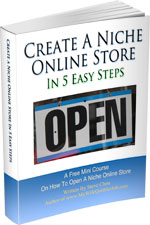
Ready To Get Serious About Starting An Online Business?
If you are really considering starting your own online business, then you have to check out my free mini course on How To Create A Niche Online Store In 5 Easy Steps.
In this 6 day mini course, I reveal the steps that my wife and I took to earn 100 thousand dollars in the span of just a year. Best of all, it's absolutely free!

